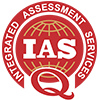Introduction:
In the dynamic landscape of industries, adherence to international standards is crucial for ensuring quality, safety, and efficiency. ISO (International Organization for Standardization) offers a range of standards covering various aspects of business operations. This article explores the importance of ISO training, its benefits, and key considerations for designing and implementing effective training programs.
Why ISO Training Matters:
Ensures Compliance: ISO standards are designed to establish best practices and guidelines for industries. Training ensures that employees understand and comply with these standards, reducing the risk of non-compliance and associated consequences.
Enhances Quality Management: ISO standards often focus on quality management systems. Training equips employees with the knowledge and skills to implement and maintain these systems, fostering a culture of continuous improvement and quality excellence.
Promotes Efficiency: Proper training helps employees understand and streamline processes according to ISO standards. This efficiency not only improves productivity but also reduces waste and operational costs.
Boosts Employee Competence: ISO training enhances the competence of employees by providing them with the necessary skills and knowledge. This, in turn, contributes to employee satisfaction and job performance.
Key Considerations for ISO Training:
Identify Applicable ISO Standards: Different industries adhere to specific ISO standards. Identify the relevant standards for your organization to tailor the training program accordingly. Common standards include ISO 9001 for quality management and ISO 14001 for environmental management.
Assess Training Needs: Conduct a thorough assessment to identify the training needs of employees. Consider factors such as job roles, responsibilities, and the specific requirements of the ISO standard being implemented.
Customize Training Content: Design training content that aligns with the organization’s processes and the requirements of the chosen ISO standard. Make the content relevant, engaging, and interactive to facilitate effective learning.
Utilize Various Training Methods: People have different learning styles. Utilize a mix of training methods, such as classroom sessions, workshops, online courses, and hands-on activities, to cater to diverse learning preferences.
Provide Real-Life Examples: Incorporate real-life examples and case studies that illustrate the practical application of ISO standards within the organization. This enhances understanding and encourages employees to relate the concepts to their daily work.
Include Practical Exercises: Implement practical exercises and simulations that allow employees to apply their knowledge in simulated real-world scenarios. This reinforces learning and helps employees develop practical skills.
Continuous Learning and Updates: ISO standards evolve, and organizations must stay abreast of changes. Implement a system for continuous learning, and provide updates to employees to ensure that their knowledge remains current.
Assessment and Certification: Conduct assessments to evaluate the effectiveness of the training. Consider providing certifications upon successful completion of ISO training programs, which can serve as a recognition of employees’ competence.
Conclusion:
ISO training is a cornerstone for organizations committed to excellence, compliance, and continuous improvement. By investing in well-designed and targeted training programs, businesses can empower their employees with the knowledge and skills needed to navigate the complexities of ISO standards successfully. A workforce that is well-versed in ISO standards not only ensures regulatory compliance but also contributes to a culture of quality, efficiency, and innovation within the organization.
